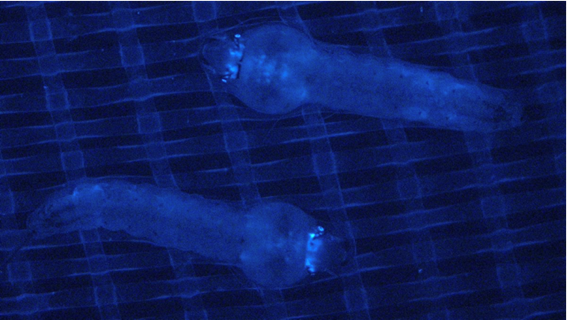
 Transgenic Anopheles gambiae larvae expressing fluorescent marker gene
Transgenic Anopheles gambiae larvae expressing fluorescent marker gene
Invention Summary:
Malaria is one of the most impactful diseases in tropical and subtropical regions and is transmitted through human contact with infectious mosquitoes. Crop pests create a large economic and social impact through direct damage to plants and spread of pathogens. Some estimates suggest a single pest, corn rootworm, causes $1 billion in damage annually in the U.S. alone. Methods to combat insect pests have primarily relied on pesticide applications which have off-target impacts, lead to resistance formation, and must be constantly applied. Even novel approaches such as sterile insect techniques are limited in their scope because of the persistent releases required for effectiveness and the potential for resistance formation.
Rutgers researchers have developed a potential permanent solution to persistent pest control issues by developing a system for genetic modification which could reduce the transmission of vector borne diseases (like malaria) from their insect vectors, or to establish expression of a desirable trait such as Bacillus thuringiensis susceptibility in crop pests. The inventors have demonstrated their solution through a transgenic construct that expresses an anti-malaria peptide in Anopheles gambiae alongside piRNAs which are designed to direct silencing towards a host gene required for reproduction. If the host silences the genetic construct, this silencing will be directed towards the host gene resulting in infertility. This platform can be used to create a gene drive that can prevent resistance formation and allow for rapid spread of a trait within a population
Advantages:
- Agricultural pest control
- Reduction of disease transmission
- Genetic modification of target species
Market Applications:
- Permanent solution to modify the biology of insect pests to reduce or eliminate their negative impact
- Reduce the need for harmful pesticides
Intellectual Property & Development Status: Patent pending. Available for licensing and/or research collaboration.